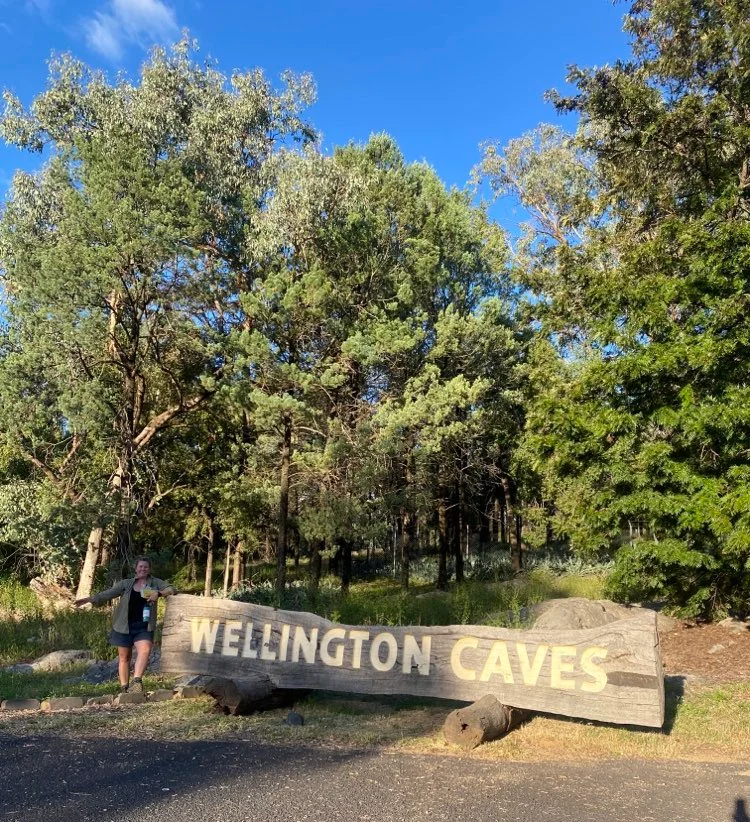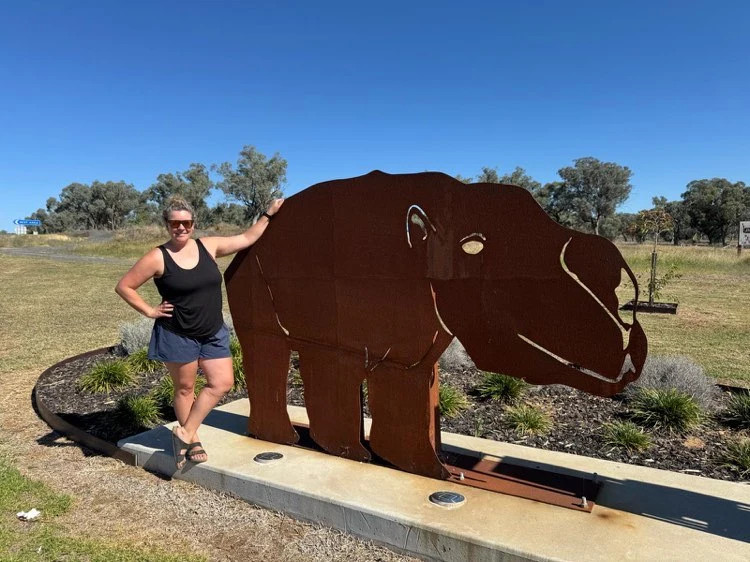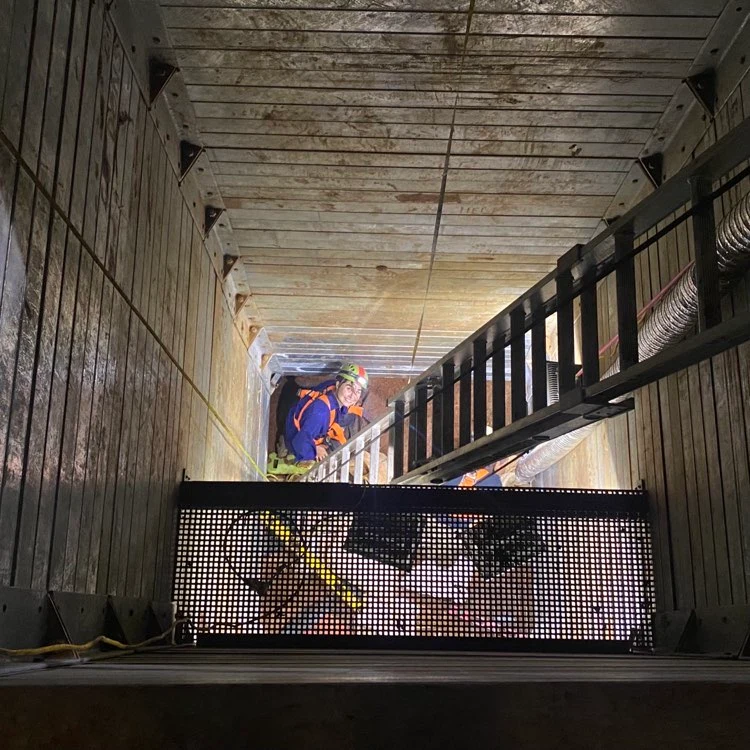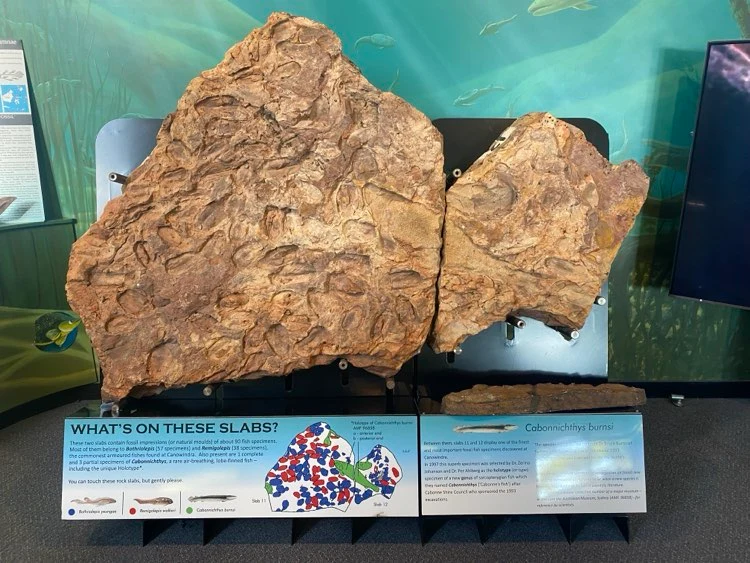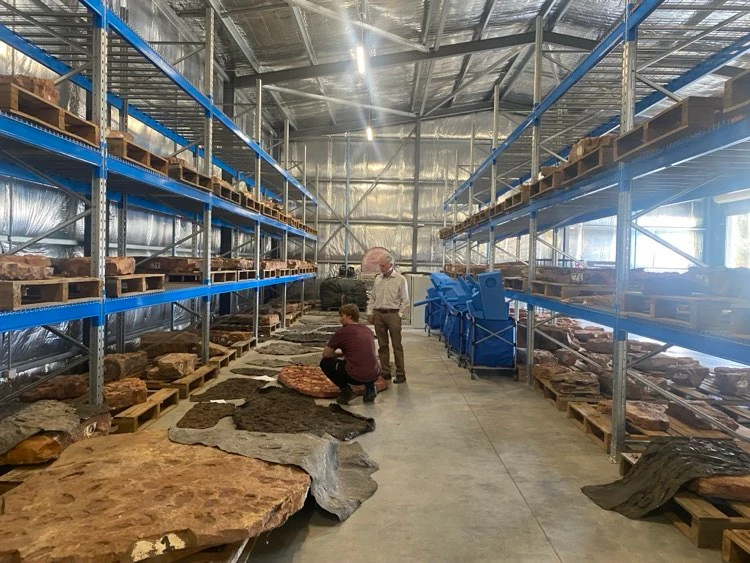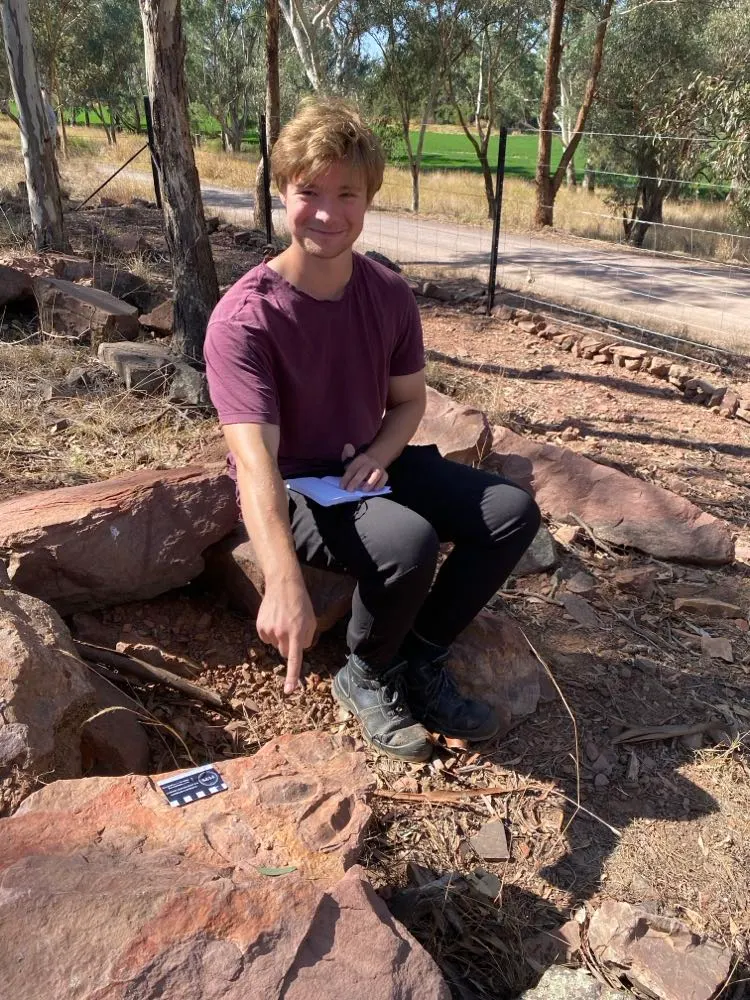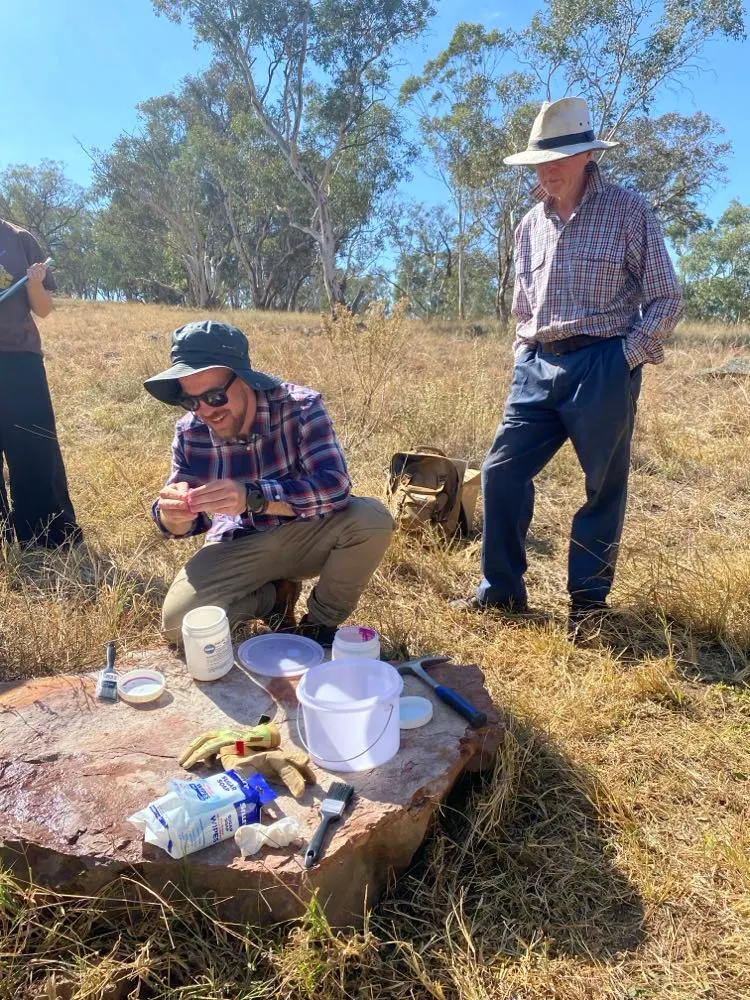
Canowindra Capers- special guest blog by Dr Alice Clement of Flinders University.•
Apr 30
4 min read
2
46
0
4 min read
I have just returned from a week in NSW central west with ~25 students from Flinders University. Our fieldtrip visited two significant vertebrate palaeontology sites in the area, the Wellington Caves, which have captured the bones of mega (and mini-) fauna over the last few million years in an ancient limestone cave complete with sparkling geological “Cathedral” features.
Just 90 minutes from Wellington lies the township of Canowindra, a site of exceptional preservation (lagerstätte) from the Late Devonian (Famennian) age. I’ve known about this site since I first started studying fossil fish, but had somehow never visited before now.
An ancient meandering river system is thought to have captured a mass of fish in a channel cutoff from the main river, which eventually dried up capturing thousands of fish in a shrinking drying billabong 363 million years ago. Evidence of the site was first recognised when a slab of rock was upended revealing curious marks underneath during the 1950s. A Canowindra local, and then the curator at the Australian Museum in Sydney could see these were unusual curious fossil fish from days gone by.
Later, Palaeontologist Dr Alex Ritchie of the Australian Museum, conducted an excavation in 1993, at that time he and his team collected approximately ~3000 fish specimens from a single layer within the Upper Devonian Mandagery Sandstone. Many of these specimens are now on display in the FANTASTIC Age of Fishes Museum.
The site itself is Late Devonian (Famennian) in age, capturing a moment in time ~363 million years ago. More than ~3000 fossils have been unearthed from a single rock layer within the Upper Devonian Mandagery Sandstone.
The accumulation of fish fossils from drought conditions points to a single palaeocommunity, with trace fossils such as ripple marks suggesting a fluviatile (billabong) environment. The preservation of the Canowindra fauna indicates that the fish became isolated in a temporary pool of water, which rapidly dried up. The concentration of all the fish packed upon one another in the layer suggests a mass mortality event due to these dry conditions.

The original fossil fish dig site.
So far there are eight species of fossil fish recognised from the Canowindra site, with one of those still awaiting formal description. The fauna is dominated by the two named species of antiarch placoderms (jawed, armoured fishes), Bothriolepis and Remigolepis, comprising some 97% of the fauna! The other placoderm, Groenlandaspis, an arthrodiran placoderm, is much rarer, with just ~50 specimens recovered. The sarcopterygians (lobe-finned fishes) are even rarer still, with the remains of approximately 20 individuals across five genera, found so far.
We were warmly welcomed to Canowindra by the new owners of the property containing the original fossil fish site, David and Aleysha McGrath, as well as by the staff of the Age of Fishes Museum. We kicked the week off with a public talk held at the bowling club where I spoke about “The Devonian Age of Fishes, from an Australian Perspective”. It was fabulous to see so many locals turn up for the event and there were many good questions and curiosity about the future of the site (I believe it is in very good hands).

David, Aleysha and Alice on site at the original fossil fish dig site.
It was a delight to take the students out into the field to see the site of the original dig and even identify a few previously undiscovered fossils from big blocks of the sandstone. The site is dominated in abundance by the placoderms, but we were shown an enigmatic new specimen that looked decidedly lobe-y. There are five species of lobe-finned fish known from the site, but these are rare occurrences. At first, we thought it might be a large individual of a long-snouted lungfish, but after taking a silicone impression of the specimen (using a special putty) we could identify it as a large individual of Mandageria fairfaxi, the biggest beast from the ancient waters of Canowindra. Mandageria holds the special honour as being the state fossil emblem of NSW!
Read more: Incidentally, do you know your own state fossil emblem?
ACT — NSW — QLD — SA — VIC — WA — (get your act together TAS & NT!)

After a morning in the field, we took the students for an afternoon at the fantastic Age of Fishes Museum. This is a really fabulous local museum where real specimens are on display showing the exceptional preservation of hundreds of whole fish bodies preserved jam-packed upon one another in their final moments. The high quality of the interpretive material and exhibits, truly welcoming staff, and sunny picnic spot outside make it well worth a visit! Our students perused the gallery and we learnt to identify and distinguish the different fish known from Canowindra. We spoke about the distribution and relative abundance of the various groups, and what palaeoecological and biogeographical implications could be drawn from that. We rounded out our afternoon with a look through the additional slabs held in the storage shed, with a surface scanning demonstration and practise session.
PhD students, Austin (left) and Ramon (right), working and teaching in the field.
.png)
